Hassan Hajjaj's vibrant portraits put Moroccan women at the centre of the story
For more than three decades, the visual artist has been making portraits that centre Moroccan culture, albeit through a subversive lens. Now, an exhibition in Toronto explores the sporty facet of his portraits
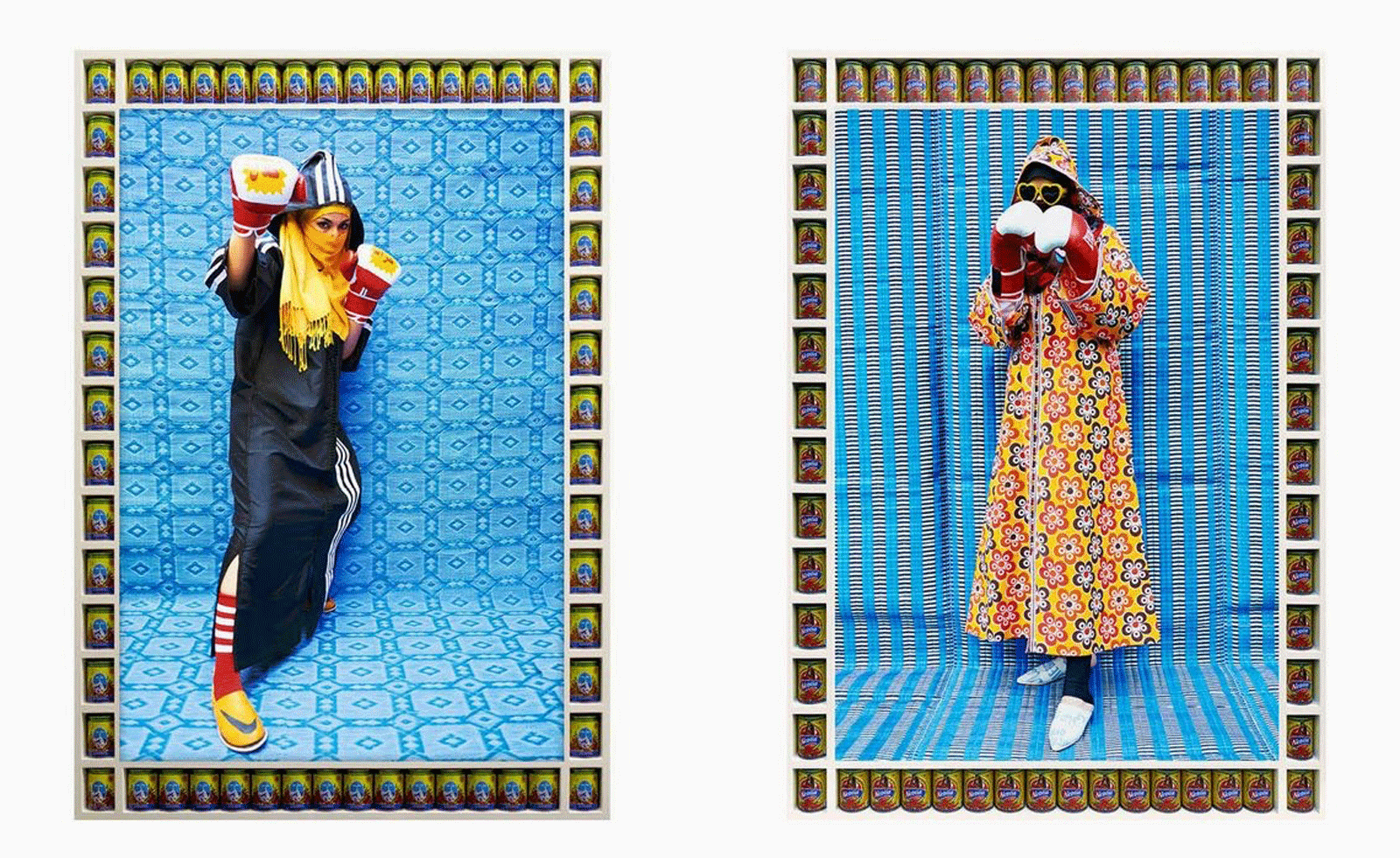
At Aga Khan Park, outside Toronto’s Aga Khan Museum, a run of low billboards presents women in boldly coloured tracksuits and floral coats, hijabs tucked beneath boxing gloves as they strike sparring poses. The installation draws from Hassan Hajjaj’s long-running La Salle de Gym des Femmes Arab (The Arab Women’s Gym), shot over roughly a decade and a half. In this series, Hajjaj places women at the centre of the often male-dominated world of sports. Capturing them actively participating in sports like soccer, boxing, and surfing.
'We were mounting an exhibition on games, so it felt like the perfect time to bring in Hassan’s Arab women gym series,' says Marianne Fenton, special projects curator at Aga Khan Museum. 'It’s a different form of play and athleticism. It feels especially critical now to showcase work like his that bridges cultures, brings things together, and reminds us we live in a globalised world with global influences.'
For more than three decades, Hassan Hajjaj has been making works that reinvent the realities he grew up to. Hassan moved to London in the 1970s, shortly after turning 13. With no Moroccan peers at school or in his neighbourhood, he gravitated toward African and Caribbean communities. The Seventies and Eighties DIY spirit shaped him: while friends cooked, photographed, made films, and pursued fashion, he launched his streetwear venture R.A.P. In early-to-mid-80s London, a growing melting pot, he and his circle built their own clubs, hangouts, and looks because the city didn’t offer them; they designed what they wanted to wear and did it themselves.
This soon spiralled into a love of portrait-making. Through collaborations and friends who believed in his vision, he built a practice that is intriguingly important in the art world. Aesthetically, Hajjaj’s images are visually striking, sometimes playful in mood and often subversive in context. He is keen on showcasing Moroccan and diasporic identities on their own terms, centring women and everyday tastemakers while adding elements of music, fashion, street culture and other things that shaped his youth.
In Conversation With Hassan Hajjaj
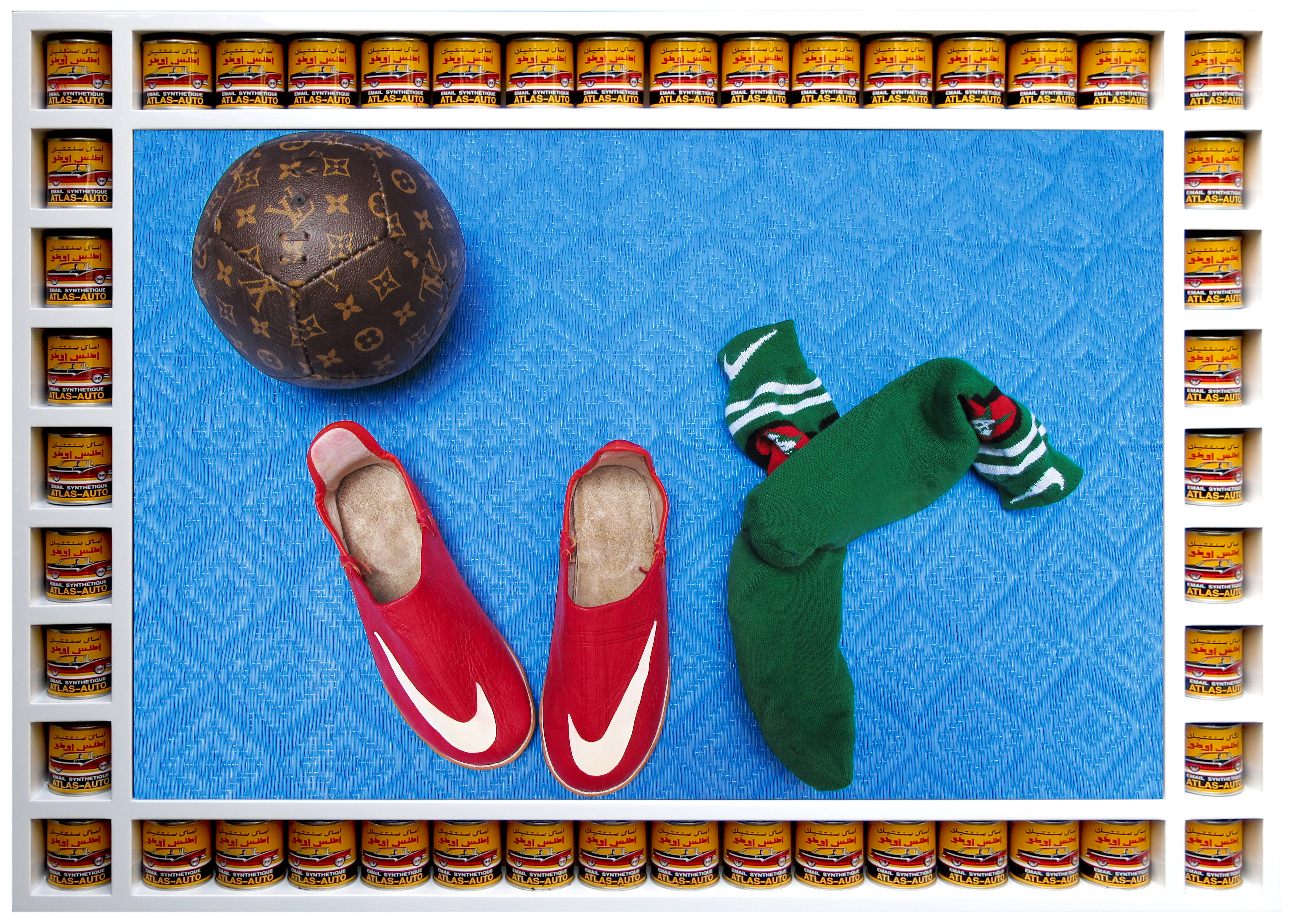
Wallpaper*: What led to your journey as a visual artist?
Hassan Hajjaj: I’m not a trained artist. I basically started in London. I used to throw a lot of underground parties. I had a streetwear brand and a shop back in 1984. I kept a space where friends would hang out, so I was working with DJs, musicians, photographers, artists. Alongside the brand and shop I was selling pieces from New York, London, and elsewhere. The label was called R.A.P (Real Artistic People)
During that time, I fell in love with photography. I’d borrow cameras, Polaroids, whatever I could get and shoot for myself without thinking much of it, especially because I had professional photographer friends around me. In 1989 I bought a camera from a photographer friend, Zak. About a year and a half later, for my birthday, he brought me a wide-angle lens for £125 back then, which was a lot. My friend believed in what I was doing, so I started putting more into it. I also did assistant styling for Andy Blake on catwalk shows and magazines. That was my learning ground working with people, creating spaces, collaborating as part of a team. That was really my university.
Receive our daily digest of inspiration, escapism and design stories from around the world direct to your inbox.
By the mid-90s, I don’t know what happened. I started taking a lot of pictures over the years. Around 1994–95, I went to see Rose Issa (the major Arab curator in the UK). I asked if she would look at my work. I took my negs and contact sheets; she looked and said, “Wow, Hassan, you have a body of work here. If you want, I can help you do shows. You don’t even have to shoot for the next five years.” Having her believe in me and introduce me to the art world was huge. I left her place thinking, I’m going to keep shooting like mad and create twenty years’ worth of shows. And I did. I started showing; she placed a couple of prints with clients and even got one into Christie’s that sold for about £25,000. It was incredible. She introduced me to the art world and taught me how to navigate it, because I came from outside that system.
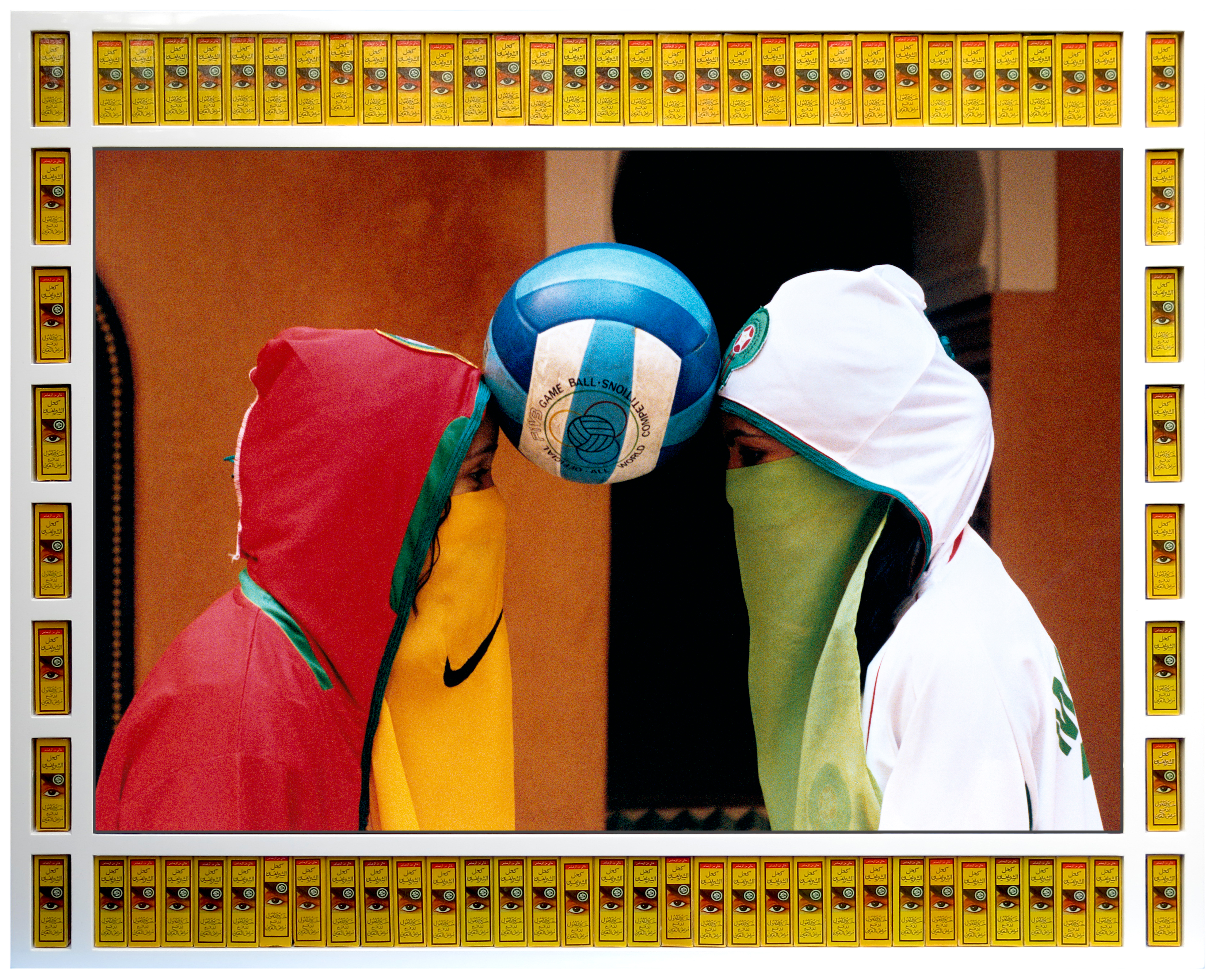
Head to Head, framed photography by Hassan Hajjaj
W*: Your work blends pop aesthetics, music, and culture. Do these influences all stem from Morocco, or were you aiming at a broader aesthetic the West could engage with?
HH: I grew up around big brands, Gucci, Prada. They weren’t designing for our world, but we wanted to be part of that world, because wearing those logos meant you’d “made it.” That’s where counterfeit culture came in. I was one of the people making printed T-shirts riffing on labels Chanel No. 5, Gucci like Dapper Dan was doing in the U.S. I come from that era, and it shows in my work. When I made shoes and outfits in Morocco, I fused those influences. I’m born and raised in Morocco, so tradition is in me, but London opened my eyes to the world, friends from Nigeria, Brazil, the Caribbean, India, China, everywhere. I just mixed it all without overthinking, because that was the world I lived in and felt comfortable with. The shoots aren’t strictly Moroccan or English, they’re a mix of what I grew up around. That all shows up in the pictures.
W*: La Salle de Gym des Femmes Arab is such an interesting body of work, what inspired it?
HH: The body of work is a mix of pictures taken over 10–15 years. There are many gyms now, but in the 90s there weren’t in Marrakech, just old-school spaces. Sometimes the gyms were segregated by time: hours for women, hours for men. This show is dedicated to the women’s side: my playful, stylized take on a female Moroccan gym, almost pointillist in spirit, but in my own world. Because I design elements for shoots, it took maybe up to 15 years to complete that body of work.
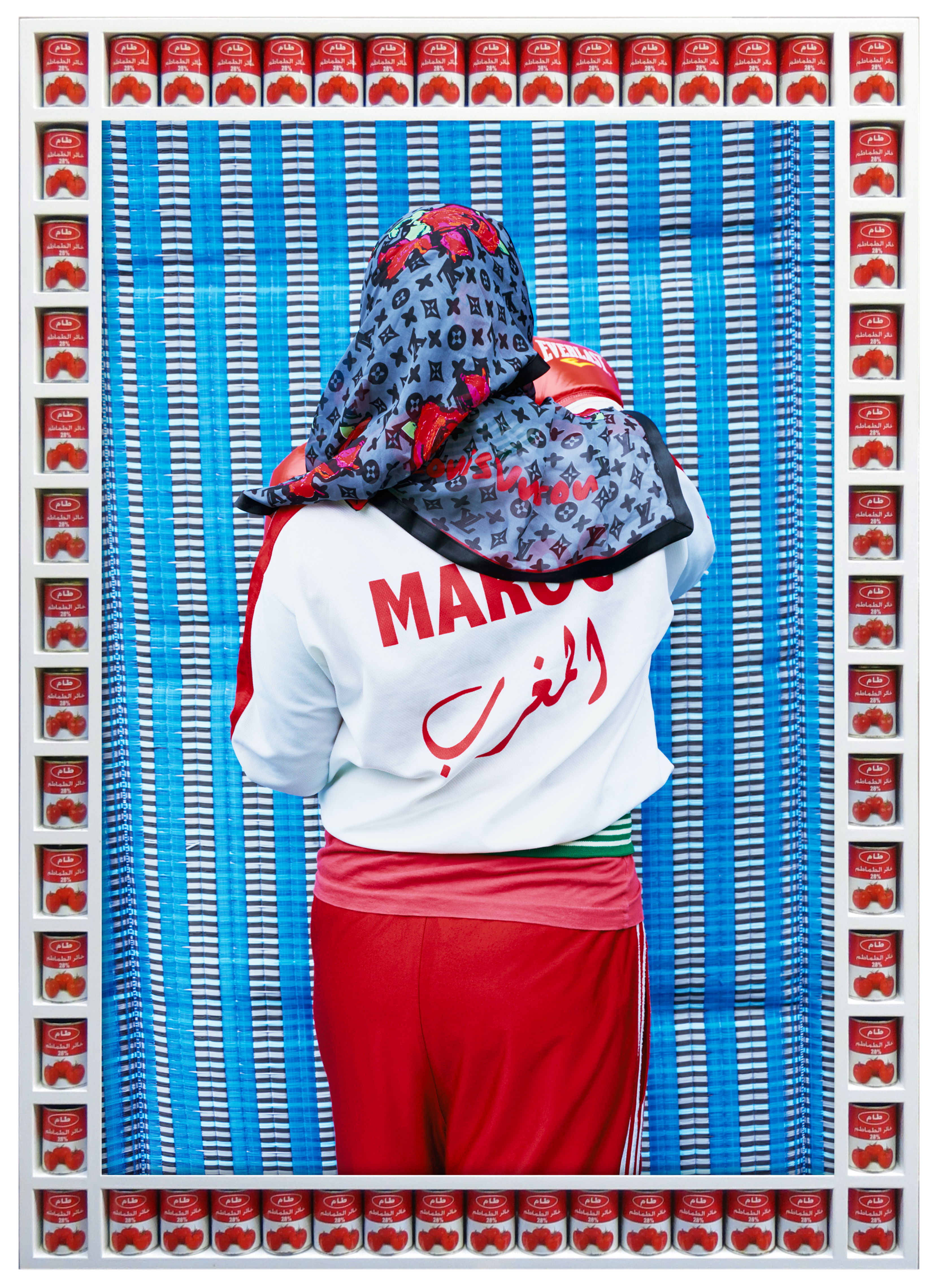
W*: With almost 40 years in, what are you most grateful for?
HH: That the process keeps me excited. I can design artwork that prints on fabric, take it to my local tailor, make a piece, get inspired by someone I want to photograph, build a backdrop, shoot, then bring in the cans from London or Morocco and build the frames. The whole journey keeps me busy day to day. It’s not one thing, it’s the mix that keeps me going.
W*: What other projects should we expect from you in the coming months?
HH: I have a space in Marrakech called Jajjah; gallery, restaurant, boutique. This year I decided to invite a Nigerian photographer friend, Andrew Dosunmu, to show from December through March. About twenty years ago he traveled the continent and, in collaboration with PUMA, made a book on African football supporters. We’re showing part of that body of work as a solo show.
Within that, I’m also doing an installation with Art Comes First, Sam Lambert and the collective called Black Supermarket, in collaboration with Andrew. We may also have Daily Paper (the Dutch brand with North African/African founders) join to do a presentation during AFCON. Beyond that, I’m working on a couple of solo shows for next year, including one in the U.S. in February. And I’ll be opening Andrew and Sam’s show on June 15 with them.
‘La Salle de Gym des Femmes Arab’ is at Aga Khan Park, Toronto, until May 31, 2026
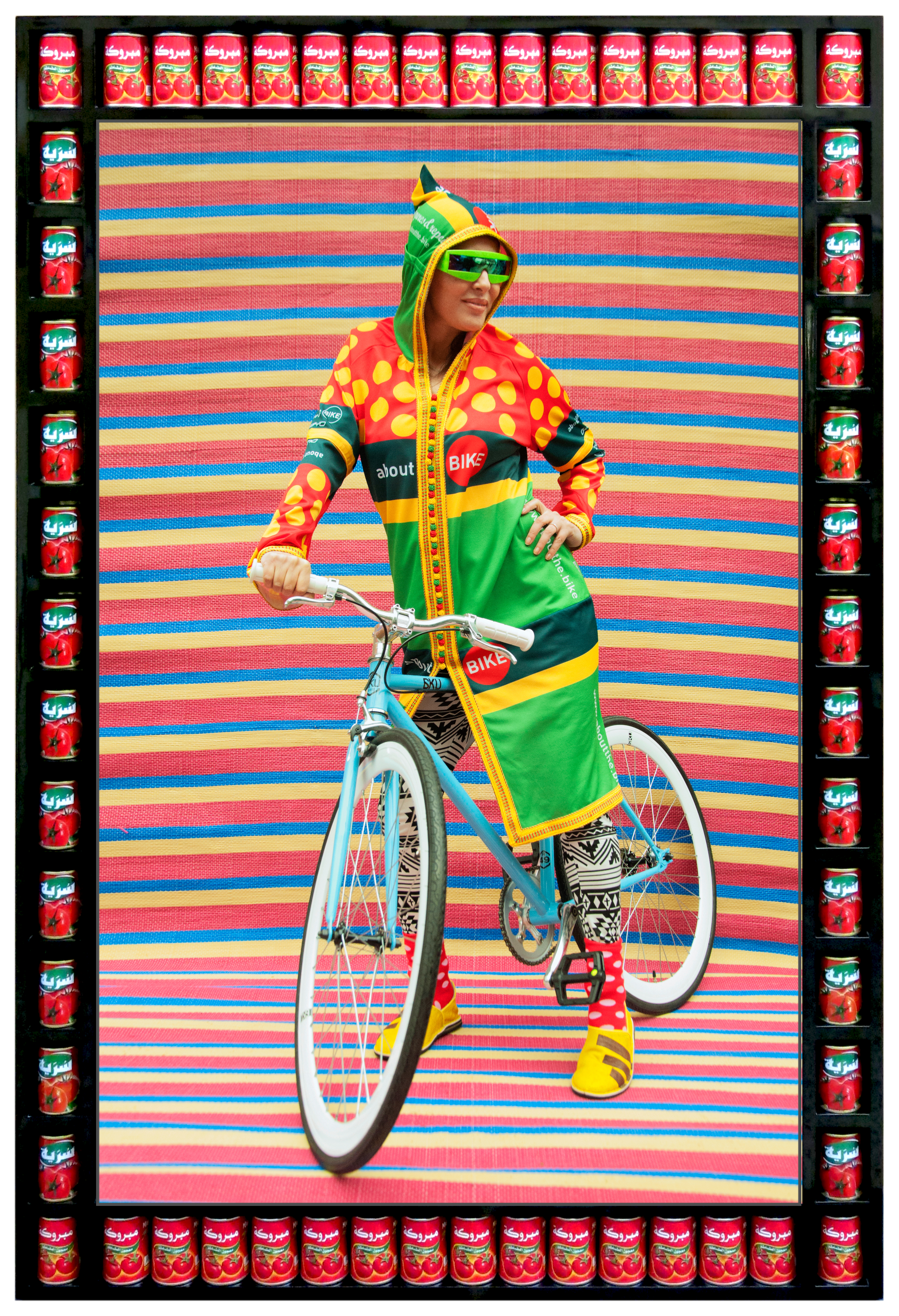
Ugonna-Ora Owoh is a journalist and editor based in Lagos, Nigeria. He writes on arts, fashion, design, politics and contributes to Vogue, New York Times, Wallpaper, Wepresent, Interior Design, Foreign Policy and others.
-
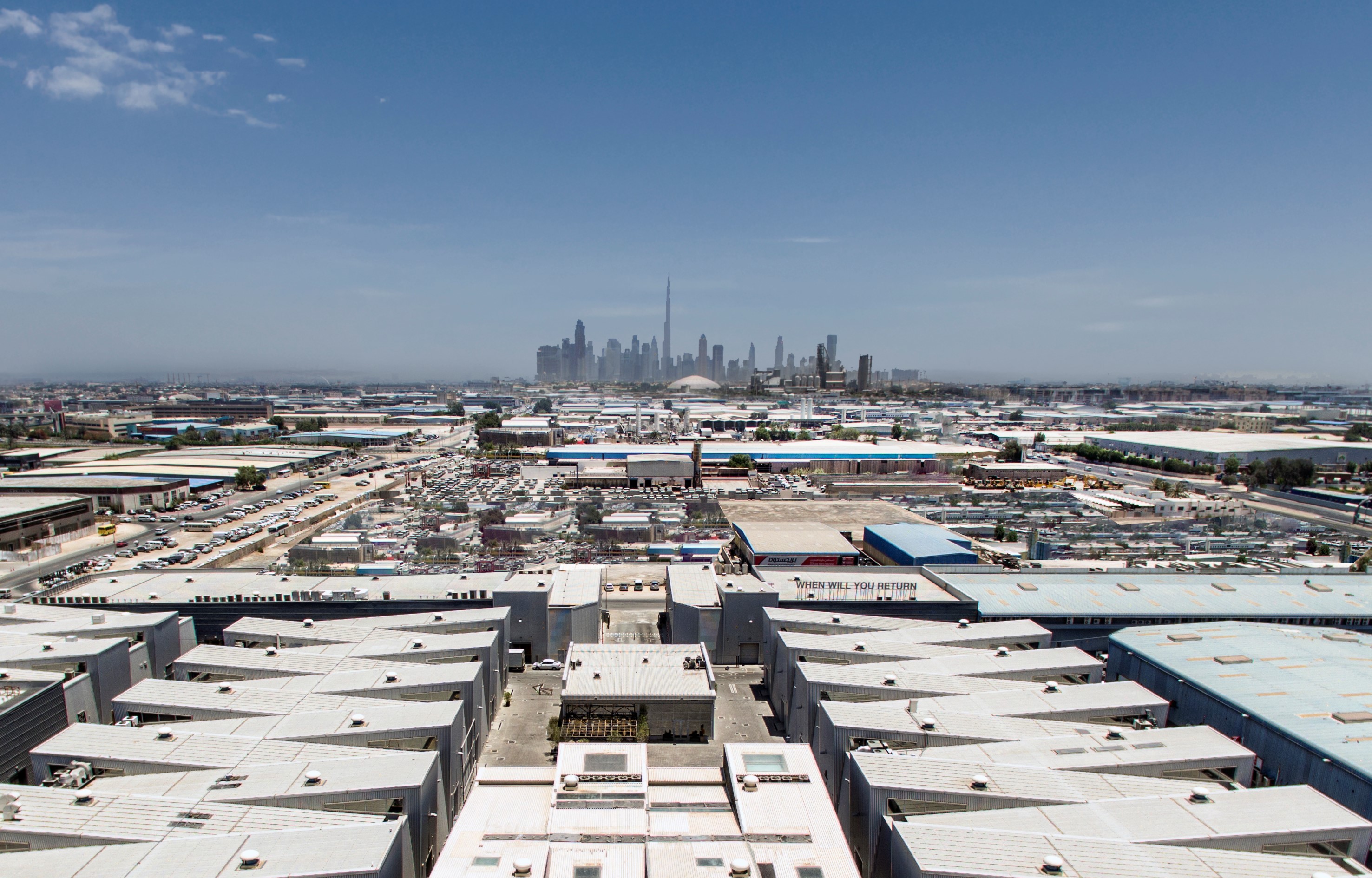 Design Miami announces Dubai collectible design platform in collaboration with Alserkal
Design Miami announces Dubai collectible design platform in collaboration with AlserkalThe new platform will honour the region’s cultural heritage while highlighting its spirit of innovation
-
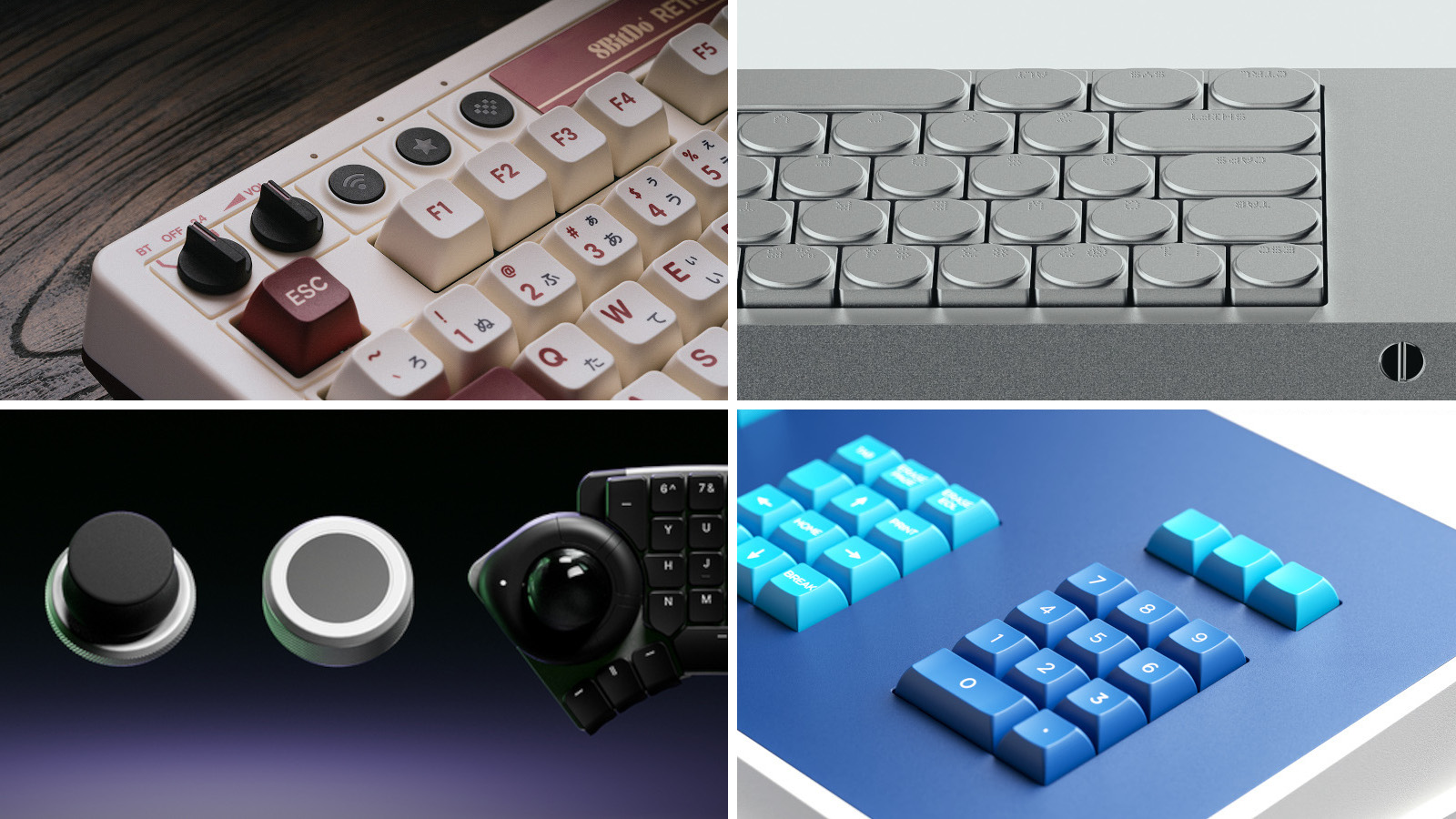 Four new keyboards are fresh and functional desktop companions
Four new keyboards are fresh and functional desktop companionsMechanical keyboards are all the rage, bringing with them new ways of personalising your desktop. We’ve found four devices that hark back to the early days of computing
-
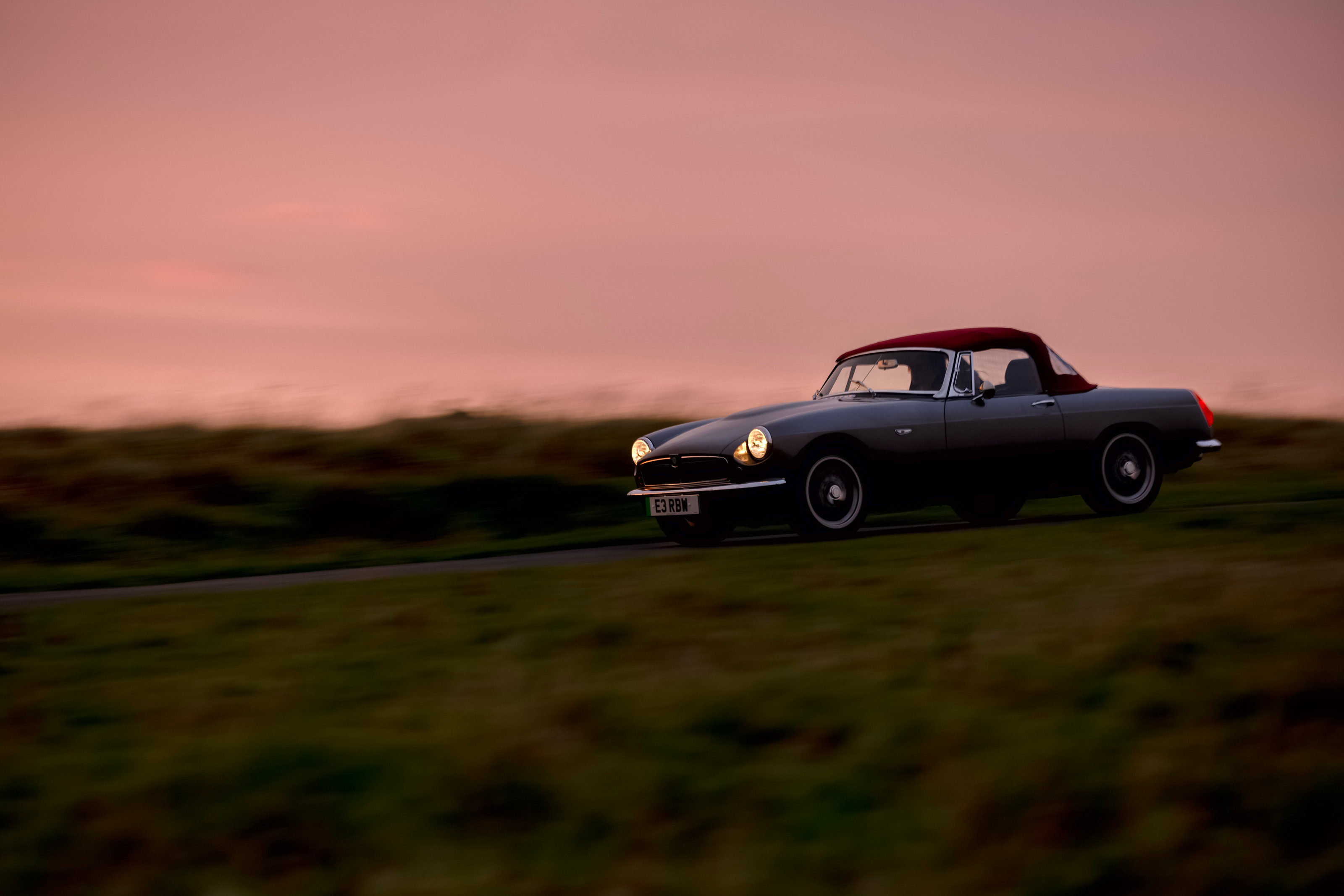 RBW EV brings a much-loved classic sports car aesthetic into the modern era
RBW EV brings a much-loved classic sports car aesthetic into the modern eraThe RBW Roadster and GT hark back to a golden age of sports car design. Under the skin, these British-built machines feature bespoke all-electric running gear